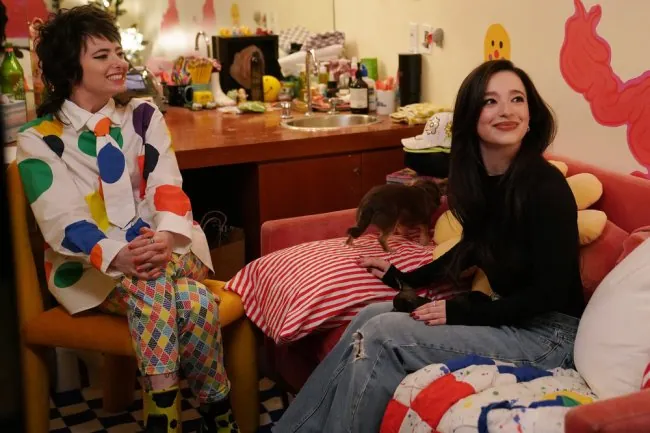
Uncovering the Hidden Lives of Autistic Women: A Call to Action
2025-04-01
Author: Charlotte
Introduction
Did you know that boys are far more likely to be diagnosed with autism than girls? Statistics show that boys are referred for an autism diagnosis 10 times more often than girls, and once referred, they are more than twice as likely to receive a diagnosis. Autism has long been perceived as a “male problem,” which is echoed in numerous studies, articles, and resources suggesting that autism occurs approximately four times more frequently in boys. However, this narrative misses a significant portion of the autism spectrum: the experience of autistic women.
Bias in Diagnosis
Recent findings suggest that the identification of autism in girls and women is fraught with bias. Research indicates that educators, when presented with identical behavioral scenarios that feature a boy named “Jack” versus a girl named “Chloe,” are more likely to classify Jack as autistic. Moreover, girls who are diagnosed with autism often experience prolonged wait times before assessment, with many struggling for years without appropriate recognition. Astonishingly, up to 80% of women with autism may initially receive misdiagnoses, including social anxiety or eating disorders, before health professionals finally identify them as autistic.
Emerging Voices
Thanks to evolving societal understandings, many of these previously overlooked women are now sharing their experiences through platforms like the Late Discovered Club. Personal stories are emerging, illuminating the struggles faced by those told that autism is “just for boys.” One mother recounted her difficulty in persuading pediatricians to evaluate her daughter, as the assumption persisted that autism was not applicable to her child simply due to her gender.
Research Bias
The sidelining of autistic women stems from a long-standing belief in the maleness of autism, reinforced by outdated research methods that largely exclude females. Surveys highlight a shocking reality—over 30% of autism studies have focused exclusively on males. Such bias creates a distorted view of autism, neglecting the unique challenges women face. This has resulted in research designed from a narrow male perspective, often overlooking female manifestations of the condition.
Cultural Representation
The cultural portrayal of autism, heavily influenced by iconic representations like the character in “Rain Man,” perpetuates a stereotype that has further marginalized women’s experiences. Thus, as diagnostic criteria were established, they became predominantly male-focused, overlooking the subtler signs of autism often exhibited by women, such as the ability to mask symptoms, or “camouflage,” which can lead to burnout or mental health crises.
Social Camouflage
Studies reveal that many women on the spectrum engage in elaborate behaviors to fit in socially, driven by an inherent desire for belonging. This can involve closely observing social interactions and mimicking behaviors to avoid standing out. These “camouflagers” often present as shy or even extroverted, as they adapt based on their surroundings, creating various identities to blend in.
New Research Directions
However, the advent of new research is slowly reshaping our understanding of autism. With the acknowledgment that different neurological responses may exist among females on the spectrum, researchers are beginning to investigate how social motivations differ between genders. While traditional views have linked autism to social avoidance, emerging studies indicate that many autistic women actively seek social connections, but often struggle due to a lack of understanding of social cues.
The Need for Inclusion
Importantly, the conversation surrounding autism must evolve. The increasing inclusion of autistic women voices in research is vital for capturing the lived experiences that highlight gaps in traditional diagnostic frameworks. Recognizing the diversity within the spectrum will not only enhance understanding for clinicians and educators but will also provide support tailored specifically for women.
Challenging Old Beliefs
As we move forward, it is crucial to challenge outdated beliefs among gatekeepers—whether educators, clinicians, or researchers—that persistently tie autism to maleness. Emphasizing that autism is not exclusive to one gender will facilitate a more inclusive understanding, one where the experiences of autistic women are validated and supported.
Addressing Emotional Toll
Furthermore, addressing the emotional toll of masking and the mental health consequences of living in a society that often overlooks their struggles could lead to better therapeutic approaches. By developing a more nuanced view of autism that recognizes the distinct challenges faced by autistic women, we can help foster acceptance and support within our communities.
Conclusion
The journey to uncover the hidden narratives of autistic women is still ongoing, but as awareness grows, so too does the understanding that autism is a spectrum that includes a rich diversity of experiences. Together, through advocacy, education, and research, we can ensure that no one, regardless of gender, goes unrecognized, and help create a more inclusive world for those on the spectrum. Let's continue to amplify these voices and redefine our understanding of autism for a brighter, shared future.









 Brasil (PT)
Brasil (PT)
 Canada (EN)
Canada (EN)
 Chile (ES)
Chile (ES)
 Česko (CS)
Česko (CS)
 대한민국 (KO)
대한민국 (KO)
 España (ES)
España (ES)
 France (FR)
France (FR)
 Hong Kong (EN)
Hong Kong (EN)
 Italia (IT)
Italia (IT)
 日本 (JA)
日本 (JA)
 Magyarország (HU)
Magyarország (HU)
 Norge (NO)
Norge (NO)
 Polska (PL)
Polska (PL)
 Schweiz (DE)
Schweiz (DE)
 Singapore (EN)
Singapore (EN)
 Sverige (SV)
Sverige (SV)
 Suomi (FI)
Suomi (FI)
 Türkiye (TR)
Türkiye (TR)
 الإمارات العربية المتحدة (AR)
الإمارات العربية المتحدة (AR)